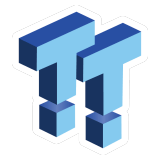Samsung Electronics Co., Ltd. and Toshiba Corporation today announced their commitment to development of the most advanced high-performance NAND flash memory technology available today - a double data rate (DDR) NAND flash memory with a 400 megabit-per-second (Mbps) interface, toggle DDR 2.0 specification. The high-performance NAND memory is expected to be of immediate benefit to a host of NAND-based mobile and consumer electronics applications, especially where there is consumer demand for an extra stretch in performance. Both companies will support a standard industry specification to enable broad-scale acceptance of this new high-speed technology.
"Our introduction of high-speed 30 nanometer class* NAND late last year served as an initial pathway for stimulating acceptance of the new high-performance toggle DDR technology," said Dong-Soo Jun, executive vice president, memory marketing, Samsung Electronics. "Now, continual upgrades in high-speed performance will create new applications and broader market opportunities for NAND flash memory. The rapid adoption of fourth generation (4G) smartphones, tablet PCs and solid state drives is expected to drive demand for a broader range of high-performance NAND solutions."
"Toggle DDR provides a faster interface than conventional NAND using an asynchronous design, delivering the benefits of high-speed data transfer to a wider market, such as for solid state drive (SSD) applications including enterprise storage, mobile phones, multimedia terminals and consumer products," said Masaki Momodomi, Technical Executive, Memory product, Toshiba Corporation. "And we will continue to make the best effort possible to create standard, high-speed NAND Flash interface solutions with NAND vendors and customers, which will accelerate the revolution in storage applications."
The current toggle DDR 1.0 specification applies a DDR interface to conventional single data rate (SDR) NAND architecture. The resulting NAND chip has a 133 Mbps interface.
Samsung and Toshiba will focus on assuring a 400 Mbps interface for the toggle DDR 2.0 specification, which provides a three-fold increase over toggle DDR 1.0, and a ten-fold increase over 40 Mbps SDR NAND in widespread use today.
Both companies support industry-wide adoption of the high-speed specification, which would facilitate faster acceptance of toggle DDR memory with hardware engineers and application designers. Last month, each company started participating in standardization efforts for the new technology through the JEDEC Solid State Technology Association.
Last updated: Apr 7, 2020 at 01:02 pm CDT

 United States: Find other tech and computer products like this over at
United States: Find other tech and computer products like this over at  United Kingdom: Find other tech and computer products like this over at
United Kingdom: Find other tech and computer products like this over at  Australia: Find other tech and computer products like this over at
Australia: Find other tech and computer products like this over at  Canada: Find other tech and computer products like this over at
Canada: Find other tech and computer products like this over at  Deutschland: Finde andere Technik- und Computerprodukte wie dieses auf
Deutschland: Finde andere Technik- und Computerprodukte wie dieses auf